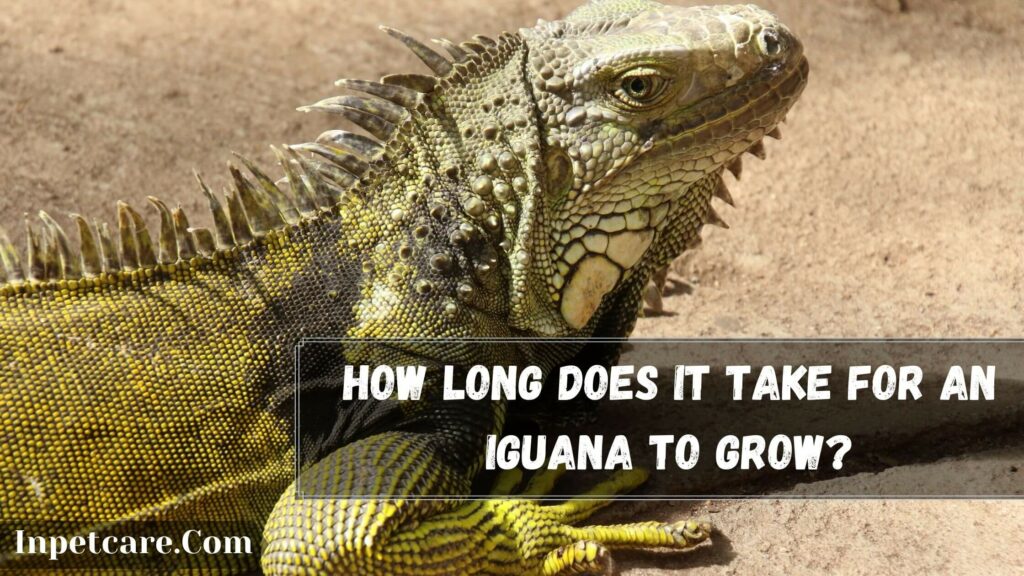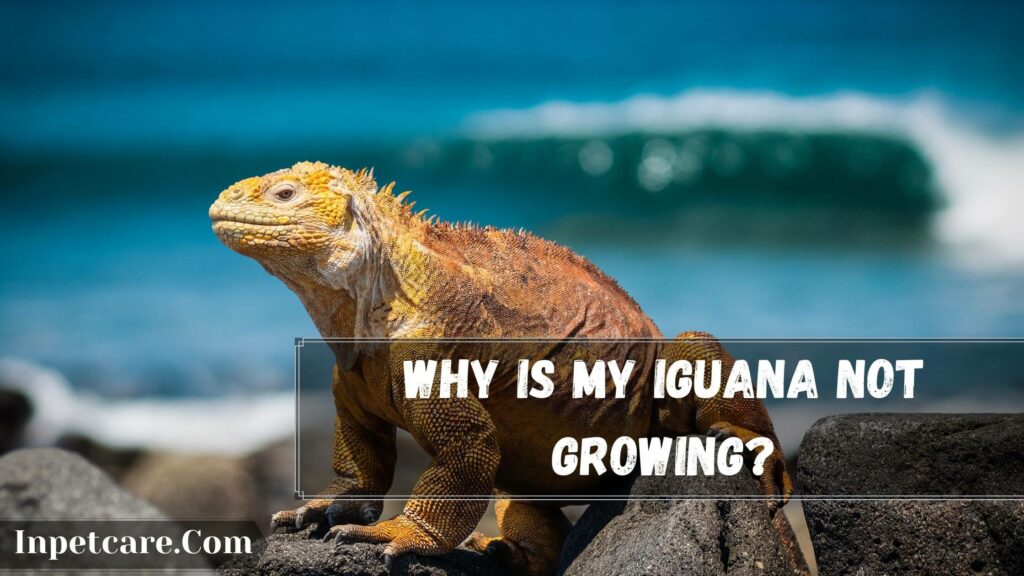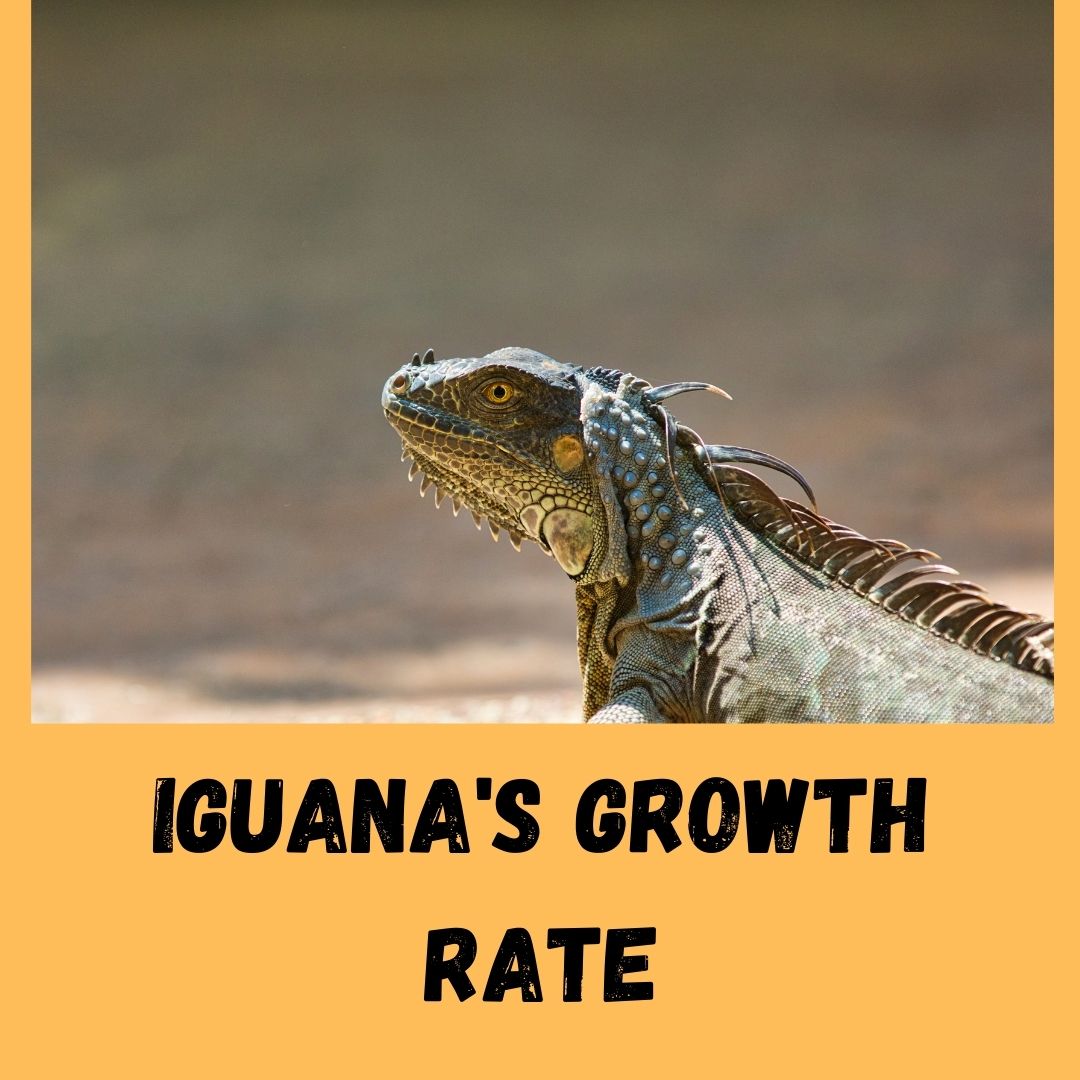Iguanas today are among the most sought-after pets to have. If you’re thinking about adopting an Iguana or a giraffe, you may have discovered that there are plenty of things you need to know before purchasing one.
It is crucial to understand what time it takes to allow an Iguana to develop. In this article, we will discuss what it takes to allow an Iguana to develop fully and why my Iguana is not expanding.
Post Contents
How Long Does It Take For An Iguana To Grow?

Depending on what Iguana species and the size, it may take time to grow fully. On average, the iguanas attain full maturity around three years old. The species of reptiles could live for up to four years in the wild. The size of a mature Iguana can be as long as 7 feet long.
Their tails can be approximately 3-4.9 inches. In captivity, their growth can be affected by humidity and temperature fluctuations. The temperature and humidity can significantly influence the rate of growth of your Iguana. Iguana sexual maturity is expected at around two years old.
However, it’s not the right time to breed them because the offspring may not remain as healthy as you’d like. It is suggested to wait until the time when your iguanas are mature to let them become pregnant. In normal circumstances, babies Iguanas are believed to weigh about 20-45 grams before they increase their growth.
The growth rate can slow down based on the food they eat, the conditions surrounding them, and the space of the enclosure. Keeping an iguana in a small enclosure can cause a slowing of growth. The iguanas that hatch Iguanas, who are just 0-6 months old, could be 5.9-10 inches long.
One-year-old Iguana will have a body length of between 7 and 18 inches, while a two-year-old iguana maybe a 27-37.4 inches long body. Did you know that external factors aren’t the only factors that affect Iguanas’ growth rate? Genetics is a major factor in determining how big an Iguana will likely increase. Based on the genetics of their parents, Iguanas can be as high as 190 cm.
How Long Does It Take For An Iguana To Grow fully?
In the initial three months in the first three months, an Iguana can grow as much as 3-9 inches. It is expected that they will increase in size by 3 to 4 inches per month. If your Iguana is in healthy condition and eats premium staple foods, it will grow quickly.
The Iguana size will reach its maximum at approximately four years old, but some expand to reach 7 to 8 years old. Each Iguana develops at different rates, but it starts rapidly. The rate of growth will slow after about 3-5 years old. Let’s look at the reasons why the Iguanas aren’t expanding.
Why Is My Iguana Not Growing?

1. Lack Of UV Lighting
It is crucial to provide adequate amounts of UV lighting for your Iguana. Because they’ve evolved and require UVB light out of the sun, if there’s a UVB light source within the enclosure, they will not be in a position to digest food properly.
The iguanas aren’t as healthy in the way they were intended to be without UVB absorption. UVB rays from the sun directly assist the Iguana in absorbing the nutrients it receives via its meals. Therefore, an Iguana may experience slow growth without nutrition that is not absorbed.
It is suggested to have the lights running for 12 hours every day to allow the Iguana to develop and flourish. So, it is important to buy a specific UVB light. You can shut off the light in the evening, then the next morning, you can turn it back on.
You could also consider investing in an automatic switch timer that can assist you in switching to and off UVB bulbs if it’s difficult for you to remember.
2. Malnourishment
A lack of nutrition is bad for your Iguana. If your Iguana does not get enough food to meet its needs for growth, it is slowed. Insufficient nutrition can be detrimental for many reasons, not to mention the growth of their Iguana.
Young iguanas are recommended to be fed 2 to 3 times a day, while adults should receive meals every day. If an Iguana is malnourished, it will appear slim or bony, and it might also cease eating.
3. Cage Size
Being active reptiles, Iguanas require a lot of room to move around and expand. Like goldfish that expands to the size of aquariums, the Iguana can’t expand beyond what the tank can support. This is why I advise you to consider the size of your case.
You should invest in a large tank based on your Iguana’s age and size. A mature Iguana requires a minimum of 55 gallons of the tank. However, based on my research and experience 75 gallon tanks are better for keeping a fully mature Iguana. Suppose you have an infant Iguana.
Ensure that you have a minimum 25-gallon tank. It is possible to find out the most effective tanks for Iguanas depending on their dimensions and age.
4. Sharing A Tank
If you’ve kept more than one Iguana in a not recommended aquarium, your pet might not have enough space. Even in a 75-gallon tank, having more than one Iguana is not recommended since they require plenty of space.
Additionally, iguanas are very territorial and will not like sharing their space; therefore, a small area can feel smaller when they share the tank. It is essential to understand the best ways to deal with iguanas when thinking about tank co-mates.
5. Parasites
If you suspect that your Iguana is being treated for parasites, it affects its digestion. The parasites can steal most of the Iguana’s nutrients and then transfer them. The parasite can also cause your pet to be malnourished. If you suspect that your Iguana is being affected by parasites, it is likely to experience loose stool.
An urgent visit to a veterinarian and treatment is suggested to resolve the issue. The longer you delay longer, the worse it’ll become. Thus, it would help if you visited your veterinarian when you noticed parasites in your stool.
6. Poorly Balanced Diet
It is essential to ensure you keep your Iguana on a healthy diet. Suppose Iguana’s nutrition needs aren’t satisfied promptly. This could cause a slowing of growth. Iguanas require more food than older ones that require more greens. Additionally, young Iguanas tend to be insectivores, but adult iguanas tend to be herbivores.
I consider calcium essential for helping your iguana increase in size and eventually reach its full size. Suppose the Iguana has calcium deficiencies and is not growing. It is crucial to stay clear of foods with an inadequate calcium content ratio to Phosphorus.
Avoid feeding insects such as crickets with a small amount of natural calcium. It is recommended to feed them foods high in calcium or directly calcium supplements. It is best to add calcium supplements to the diet of your children. I suggest that you sprinkle calcium supplements onto the food they eat before it’s served. Insects such as roaches, and dubia, are recommended to feed to babies of iguanas as they’re rich in nutrients.
7. Low Temperature
The temperature is essential for iguanas to digest food correctly and absorb calcium. Iguanas require high temperatures for the digestion of food and various reasons. The temperature can also help them gain energy to keep active.
If they don’t have the right temperatures, they’ll become lethargic and inactive. In addition to temperature fluctuations, heat aids in growth. A temperature that is too low causes your pet to grow slowly. In addition, an unbalanced temperature could also cause your Iguana to shrink to a standard size.
It is crucial to regularly keep an eye on the temperature and maintain it at around 100 degrees Fahrenheit at the higher temperature while keeping it around 80 degrees Fahrenheit on the cooler side.
FAQ

94% of pet owners say their animal pal makes them smile more than once a day. In 2007, I realized that I was made for saving Animals. My father is a Vet, and I think every pet deserves one. I started this blog, “InPetCare”, in 2019 with my father to enlighten a wider audience.
